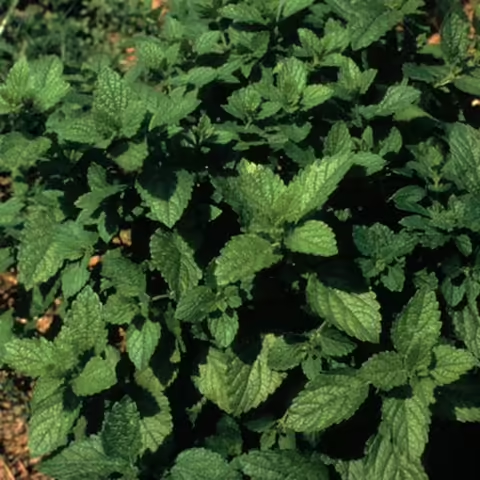Lemon Balm
Melissa officinalis
Lemon balm is an upright, bushy, herbaceous perennial. Leaves are light green, arrowhead shaped, somewhat hairy and coarse textured. Lemon balm grows to about 10-24 inches tall. Flowers may be white, pale yellow or pink.
Growing: Perennial
Lemon balm can be grown in full sun to partial shade in soils that are moist but well drained. It can be propagated by seeds, division or stem cuttings. Lemon balm is often confused with mint in regards to how it grows and spreads in the garden. While mint can spread rapidly by underground stems, lemon balm spreads by setting lots of seed and can, if allowed to go unchecked start to overtake the garden. To prevent spreading, prune flowering stalks before they have a chance to set seed. To keep plants vigorous, thin plants out in mid-summer by cutting out stems to open up the plant to better air circulation. Lemon balm can also be cut back to about one-half its height to encourage fresh, vigorous new growth. Watering after this heavy pruning helps the plant recover quicker.
Popular Varieties
- ‘Compacta’ – A more compact form of lemon balm that is also sterile which means the flowers do not set viable seed. This help to prevent spreading in the garden.
- ‘Aurea’ – Foliage is an attractive variegated yellow in spring and fall.
Harvesting
Stems can be cut as needed anytime during the season preferably before flowering. While fresh lemon balm is superior to dried, cut stems can be bundled, hung in a warm, dark, well ventilated location to dry. After drying, strip leaves from stems and store in a sealed container. Leaves can also be frozen for later use.
Use
Lemon balm can be used to flavor many different types of dishes. It can be added to salads, stews, soups, fish, pork and egg dishes. It is also used in making jellies, teas and vinegars and to compliment fruit.
